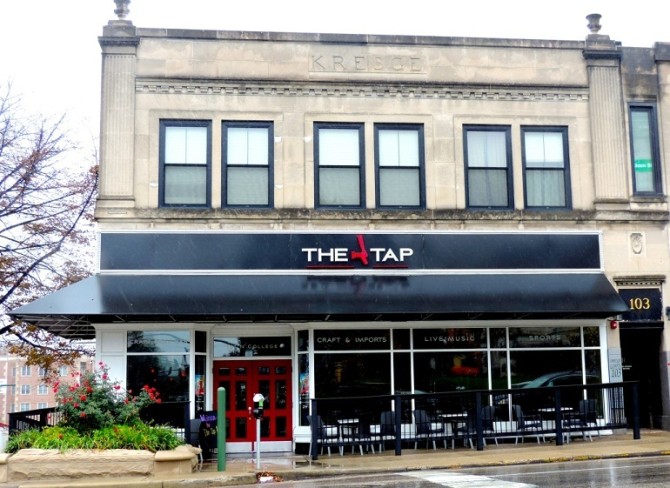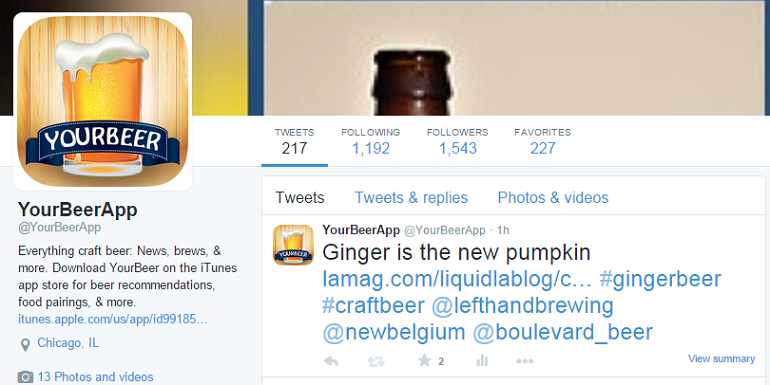It started early on one Spring night when I was sitting in a local Bloomington establishment deciding on what beer to order. The Tap is not your traditional college bar — it features 50 different craft beers on tap and over 500 varieties of bottled beer. Needless to say, the menu is daunting.
This is not the first time I had experienced the paradox of choice with craft beer. I have noticed that more breweries are continuing to create endless varieties of seasonal and specialty brews. This choice overload creates stress and pressure to find the perfect beer and increased my purchase regret if I chose something I did not like. I became determined to find a way to make choosing a beer easy and enjoyable, not overwhelming and stressful.

Photo by: Maddie Wilmes
I spent 15 minutes interpreting every description and adjective on the drink menu. Feeling defeated, I finally just asked the waitress to bring over her favorite beer. As I sipped on my underwhelming draught, trying to relax, I brainstormed a couple solutions to this problem. The one that stuck with me was to create an app. I wanted to build a simple, fun and stress-free app that could recommend a beer to try at any time.
I outlined two sets of questions for the app. The first quiz would be fun and light-hearted, mirroring a Buzzfeed quiz. The second would be serious and ask questions about beer to more accurately find a brew you would enjoy. The fun and easy quiz would target users who just want to relax and have a good time and the beer-centric quiz would be geared towards serious drinkers searching for their next beer.
There was one minor problem with my plan: I had zero coding or programming skills. I did not even know where to get started, so the extensive Google searching began.
Eventually, I stumbled upon Upwork (formerly Elance). Upwork is a site that allows you to post freelance projects (website creation, article writing, app programming, etc.) to skilled individuals and companies to bid on the project you post. I gave it a shot. To protect my million dollar idea, I posted a vague job outline asking for a developer who could code a simple quiz app. Within 48 hours I had over 30 bids on my project ranging from $250-$10,000.
After a set of interviews and negotiations I found my ideal programmer who agreed to code the app for $200. I was fortunate to find someone who I thought was talented for such a bargain. As I was undertaking all of this work in Upwork, I was also busy creating a wireframe.
Basically, a wireframe is an outline of how an app will function. It uses images and text to describe every feature, button and action within an app. Like a true novice, I created my wireframe in a word document and relied heavily on text to describe the function of the app. Looking back, a great resource I could have used was the Justinmind interactive wireframe tool.
So I had my wireframe, coder, and a small $200 budget. I thought it would be smooth sailing from here. I did not know that it would take countless iterations and tests before I had an app I felt good about releasing to the public.
![]()
Communicating with my developer was key to overcoming this long process. We messaged each other a couple times every week (this worked best for us since he lives half way around the globe). A month passed and I was finally ready to release a working version of YourBeer.
After a couple mishaps with the iTunes app store, I finally had the app up and running. YourBeer had an enticing description, screenshots and tags to help with search optimization. Despite my effort, after the first day in the store it had a measly 70 downloads. Not a great number considering most of those people were either friends or family. I had been so busy creating the app that I pushed advertising to the back burner (Spoon pun). Better late than never, I got to work.
Advertising proved to be challenging. I had already sunk $200 into this app and fresh out of college I was no position to be frivolously spending money. I also had ideas flowing on how to upgrade and improve the app. I decided to save all of my money for app development and use solely earned media to advertise YourBeer.
I started reaching out to blogs, breweries and influencers in the industry to help get the word out. A couple beer blogs featured the app which led to a handful of downloads, but I needed more (you can check out the blog posts here and here). I pushed on with the blog approach, but also recently launched a YourBeer twitter profile to help generate awareness (@yourbeerapp).
Publishing quality content on Twitter has led to a couple new downloads every week. Not a huge number, but I like the consistent results.

Moving forward, my goal is to create the best app that helps people choose what beer to order next. I want to solve the paradox of choice that I described earlier when at The Tap. I am determined to continue to improve the app until it reaches that goal.
You can check out at the app at this link.
YourBeer just turned 2.0 in early August and version 3.0 is already in the works. Follow us on Twitter to stay in the loop.

